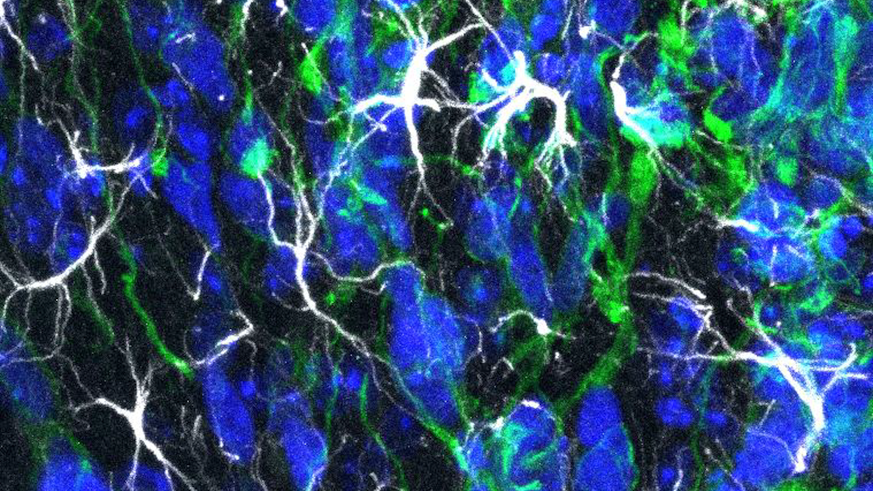The future of targeting brain cancer
21 August 2019

Over 11,000 people are diagnosed with brain cancer in the UK each year, but scientists have discovered molecular targets that might lead to a new generation of brain cancer therapies.
Chemicals that enable brain cancer cells to communicate and grow might be the target of brain cancer therapies of the future, according to new research from the European Cancer Stem Cell Research Institute at Cardiff University, Cleveland Clinic and Uppsala University.
Scientists have identified two biological molecules, called ADAMDEC1 and FGFR1, which play a key role in processes in glioblastoma cancer stem cells, the cells responsible for driving the growth and spread of brain tumours.
Dr Florian Siebzehnrubl, Cardiff University, said: “Glioblastomas are lethal brain tumours with a poor prognosis as they are resistant to therapy and infiltrate the structures in the brain.”
“The aggressive behaviours that we see in glioblastomas can be attributed to cancer stem cells, which are a small population of cells in a tumour that divide to drive the growth of a tumour, and are responsible for the spread of the cancer around the body.
“If we can understand the activities of cancer stem cells, we can begin to effectively target the cancer stem cells in a tumour, which we believe will enable us to develop a more effective therapy.
“We wanted to investigate the mechanisms that allow cancer stem cells in the brain to keep their cellular properties, which enable them to create new cancer cells and be resistant to current cancer treatments.”
The researchers identified, ADAMDEC1 and FGFR1, which are proteins given off from cancer stem cells to communicate with other cells around them. These chemicals help to keep the glioblastoma cancer stem cells healthy so that they can continue divide and grow the tumour.
“By targeting the genes for ADAMDEC1 and FGFR1, or through drugs that specifically interfere with the activity of these two proteins, we see that the glioblastoma stem cells are killed off and the tumour growth slows down.
“This makes ADAMDEC1 and FGFR1 possible therapeutic targets for glioblastoma, and through further research we can investigate their effectiveness as therapeutic targets.
“This research has laid the foundations to potentially uncovering a new class of brain cancer therapies, which will hopefully make a difference to the treatment of this lethal disease in the future,” added Dr Siebzehnrubl. "Glioblastoma is a disease that differs widely between different patients – making it very difficult to treat and understand.”
“These studies provide a paradigm for cancer stem cell regulation by which this population can selectively access key nutrients embedded within their surrounding microenvironment.
“This is another example through which cancer stem cells can engage in communication with their microenvironment for their growth and preservation,” added Dr. Justin Lathia of Cleveland Clinic Lerner Research Institute.
“This project illustrates the importance of combining biobanks with cell culture from many patients, to uncover new mechanisms of cancer vulnerabilities that may be turned into personalised therapies,” added Professor Karin Forsberg Nilsson.